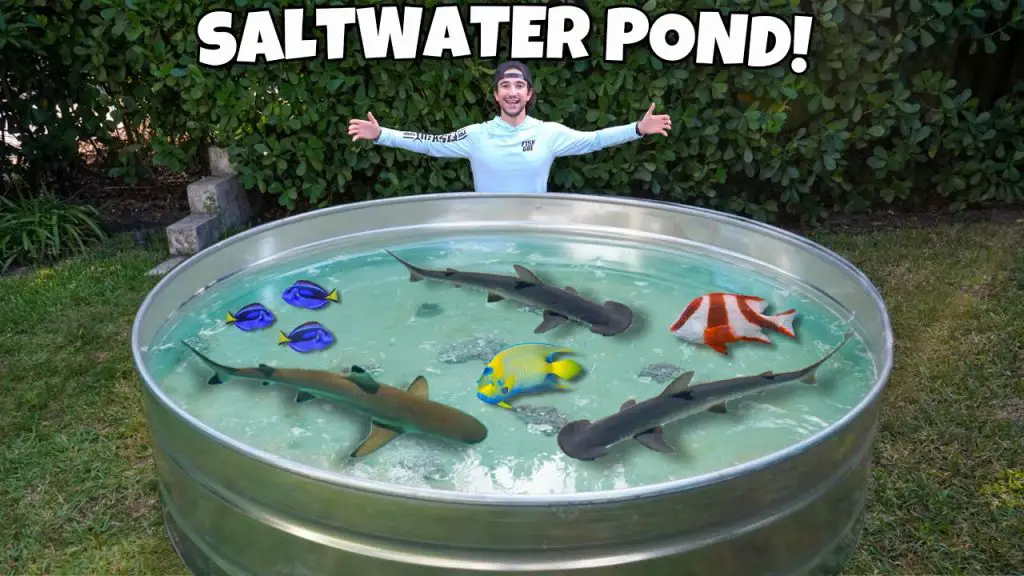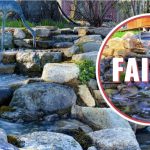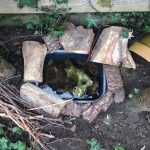How to Build a Saltwater Pond
Saltwater ponds are a beautiful addition to any outdoor space, offering a serene and captivating environment. Whether you’re a marine enthusiast or simply enjoy the calming presence of aquatic life, building a saltwater pond can be a rewarding project. In this comprehensive guide, we’ll explore the step-by-step process of creating your own saltwater pond, from planning and design to maintenance and care.
1. Planning and Design
Before embarking on the construction of a saltwater pond, it’s essential to carefully plan and design the layout and features of the pond. Consider the following key factors:
Location: Choose a suitable location for your saltwater pond, ensuring that it receives adequate sunlight and is shielded from strong winds. The site should also be easily accessible for maintenance tasks.
Size and Shape: Determine the size and shape of the pond based on the available space and your aesthetic preferences. Consider the dimensions that will accommodate the marine life you intend to house.
Depth: Saltwater ponds should typically have a depth of at least 18 inches to support the health and well-being of marine organisms. Deeper areas can be incorporated for specific species or aesthetic purposes.
Filtration and Circulation: Plan for an efficient filtration and circulation system to maintain water quality and clarity. This may include pumps, skimmers, and biological filtration components.
2. Excavation and Construction
Once the planning and design phase is complete, it’s time to begin the physical construction of the saltwater pond. Follow these steps to bring your vision to life:
Excavation: Use a shovel or mechanical excavator to dig out the designated area for the pond, ensuring that the depth and shape align with the planned design. Remove any rocks, roots, or debris from the excavation site.
Liner Installation: Line the excavated area with a durable, fish-safe pond liner to prevent water seepage. Ensure that the liner is properly positioned and secured to create a watertight enclosure.
Hardscaping and Landscaping: Incorporate hardscaping elements such as rocks, boulders, and driftwood to create naturalistic features within the pond. Consider adding aquatic plants and substrate to enhance the aesthetic appeal and provide habitat for marine life.
Water Inflow and Outflow: Install a reliable inflow and outflow system to regulate the water level and maintain proper circulation. This may involve the use of plumbing fixtures, valves, and water pumps.
3. Water Quality and Maintenance
Maintaining optimal water quality is crucial for the health and longevity of a saltwater pond. Implement the following practices to ensure a thriving aquatic environment:
Salinity Levels: Monitor and maintain appropriate salinity levels within the pond to mimic natural marine conditions. This may involve the use of a refractometer to measure salt concentration.
Water Testing: Regularly test the water parameters, including pH, ammonia, nitrite, and nitrate levels, to identify any imbalances or fluctuations. Adjust water chemistry as needed to create a stable and healthy environment.
Filtration and Skimming: Clean and maintain the filtration system, including skimmers, mechanical filters, and biological media, to remove debris, organic matter, and impurities from the water.
Algae Control: Implement strategies to control algae growth, such as the use of algae-eating organisms, UV sterilizers, and regular water circulation. Consider the addition of macroalgae for natural nutrient uptake.
4. Marine Life and Aquatic Species
Selecting and introducing marine life into the saltwater pond is a pivotal aspect of creating a captivating and dynamic ecosystem. Consider the following guidelines when choosing and caring for aquatic species:
Fish Selection: Research and choose fish species that are well-suited to a saltwater pond environment, considering factors such as size, temperament, and compatibility. Popular choices may include clownfish, gobies, and tangs.
Invertebrates and Corals: Introduce a diverse array of invertebrates and corals to enhance the biodiversity and visual appeal of the pond. Ensure proper lighting, water flow, and substrate conditions for coral health.
Feeding and Nutrition: Provide a balanced and varied diet for the marine inhabitants, incorporating high-quality commercial foods, live or frozen prey, and nutritional supplements as needed. Monitor feeding behaviors and adjust rations accordingly.
Compatibility and Aggression: Pay attention to the interactions and territorial behaviors of the aquatic species to prevent aggression and conflicts. Create suitable hiding places and territories within the pond to minimize stress.
5. Aesthetic Enhancements and Ambiance
Enhancing the aesthetic appeal and ambiance of the saltwater pond can elevate the overall experience for both observers and inhabitants. Consider the following creative additions and design elements:
Aquascape Design: Incorporate visually striking aquascaping elements such as live rock formations, artificial reefs, and naturalistic structures to create a visually stimulating and dynamic environment.
Lighting Effects: Install underwater and landscape lighting to illuminate the pond during the evening hours, creating a captivating display of marine life and enhancing the nocturnal behaviors of the inhabitants.
Soundscapes and Water Features: Integrate water features such as fountains, waterfalls, or bubblers to introduce soothing sounds and visual interest. These additions can also contribute to aeration and water oxygenation.
Interactive Viewing Areas: Create designated viewing areas or observation points around the pond, allowing for close-up interactions and immersive experiences with the marine life.
6. Environmental Considerations and Sustainability
Promoting environmental sustainability and ecological balance within the saltwater pond is essential for long-term success and conservation. Incorporate the following practices to minimize environmental impact:
Native Plant Species: Introduce native aquatic plants and macroalgae to support the natural ecosystem and provide habitat for local fauna. Avoid introducing invasive species that may disrupt the ecological balance.
Water Conservation: Implement water conservation measures, such as rainwater harvesting, efficient irrigation, and water reclamation, to minimize the reliance on freshwater sources and reduce environmental strain.
Eco-friendly Products: Utilize eco-friendly pond maintenance products, such as natural algae control solutions, organic fertilizers, and biodegradable cleaning agents, to minimize chemical impact on the ecosystem.
Educational Outreach: Share knowledge and experiences about saltwater pond care and conservation practices with the community to promote awareness and responsible stewardship of marine environments.
7. Community Engagement and Networking
Engaging with fellow saltwater pond enthusiasts and marine hobbyists can provide valuable insights, support, and inspiration. Consider the following avenues for community engagement and networking:
Local Clubs and Societies: Join local aquarium clubs, marine conservation groups, and pond enthusiast societies to connect with like-minded individuals and participate in educational events and workshops.
Online Forums and Social Media: Engage in online forums, social media groups, and digital communities dedicated to saltwater pond enthusiasts. Share experiences, seek advice, and stay updated on the latest trends and developments in the marine hobbyist community.
Collaborative Projects and Events: Collaborate with local organizations, educational institutions, and environmental initiatives to contribute to marine conservation efforts and promote the significance of saltwater pond ecosystems.
Conclusion
Building a saltwater pond is a fulfilling endeavor that offers a unique opportunity to create and nurture a captivating marine environment. By carefully planning the layout, maintaining water quality, selecting suitable marine life, and promoting environmental sustainability, you can cultivate a thriving and visually stunning saltwater pond that serves as a source of joy and inspiration for years to come.
Whether you’re a seasoned marine hobbyist or embarking on your first saltwater pond project, the journey of building and caring for a marine ecosystem is a continuous learning experience that fosters a deeper connection with the aquatic world. Embrace the creativity, challenges, and rewards of saltwater pond ownership, and savor the beauty and tranquility of your own piece of the ocean.





